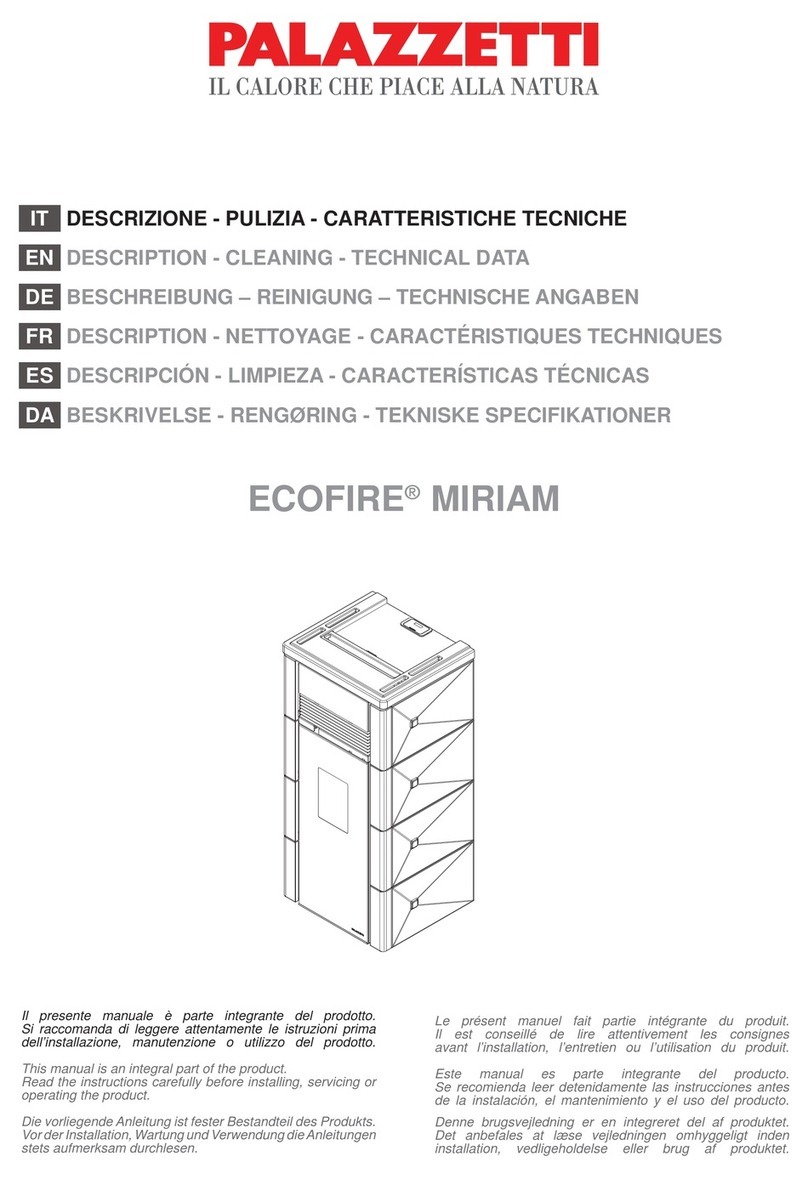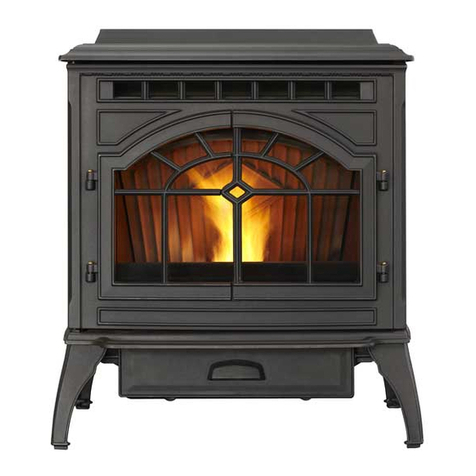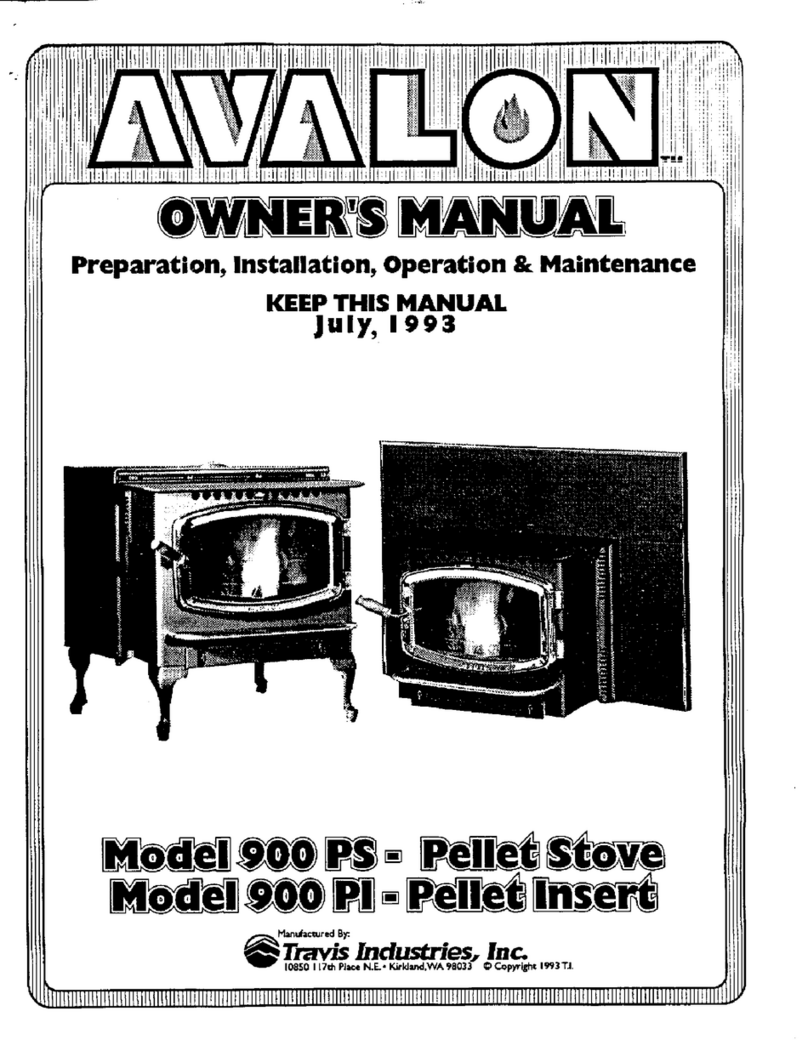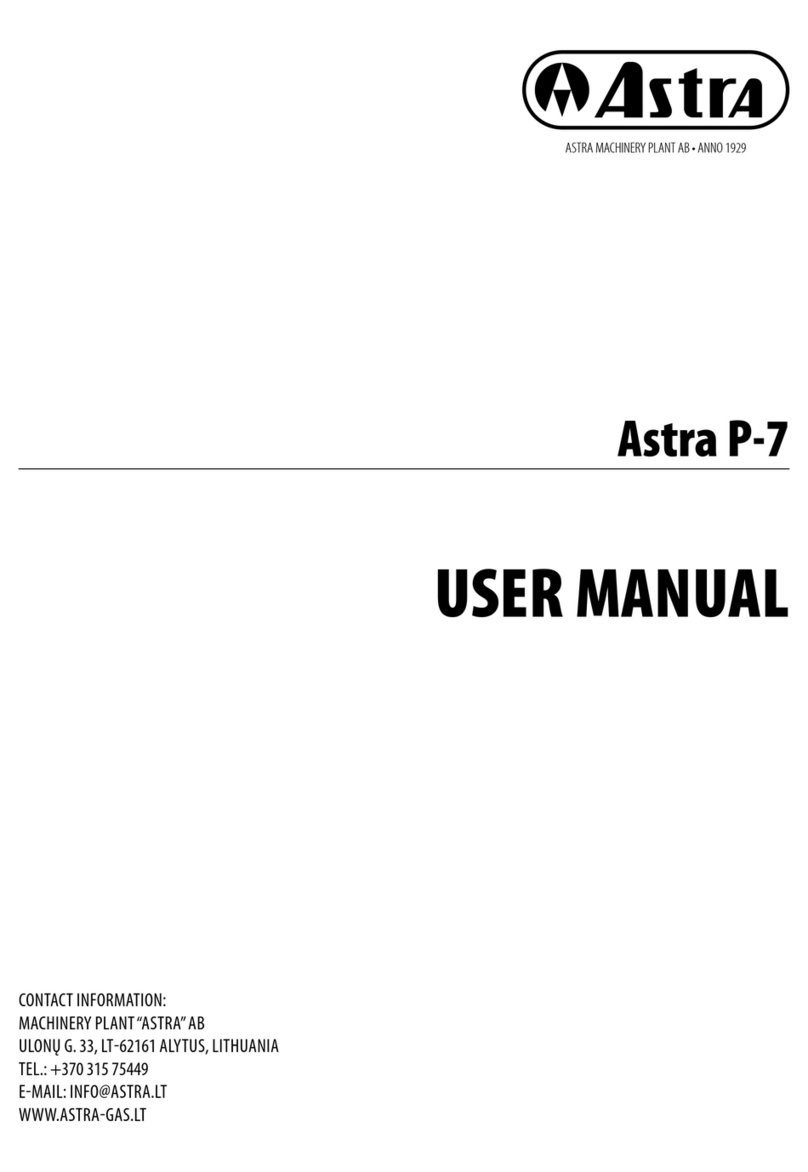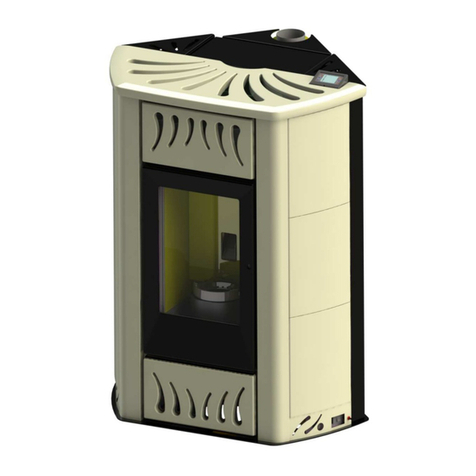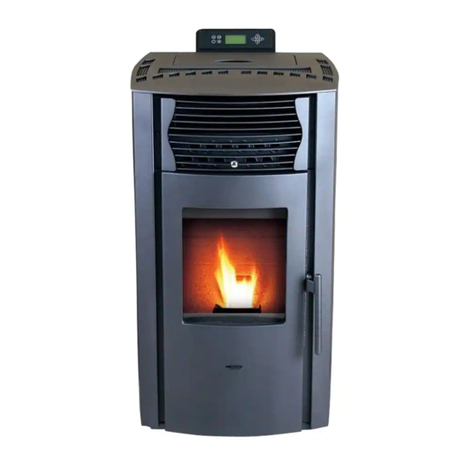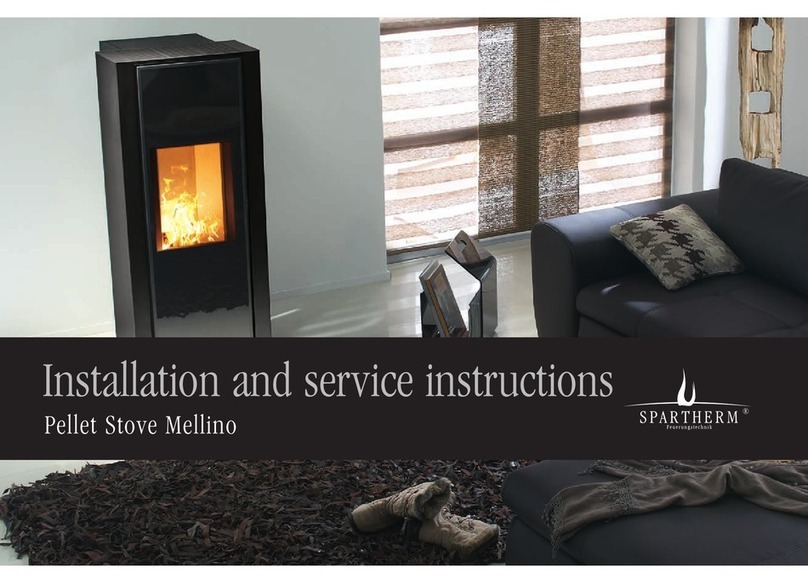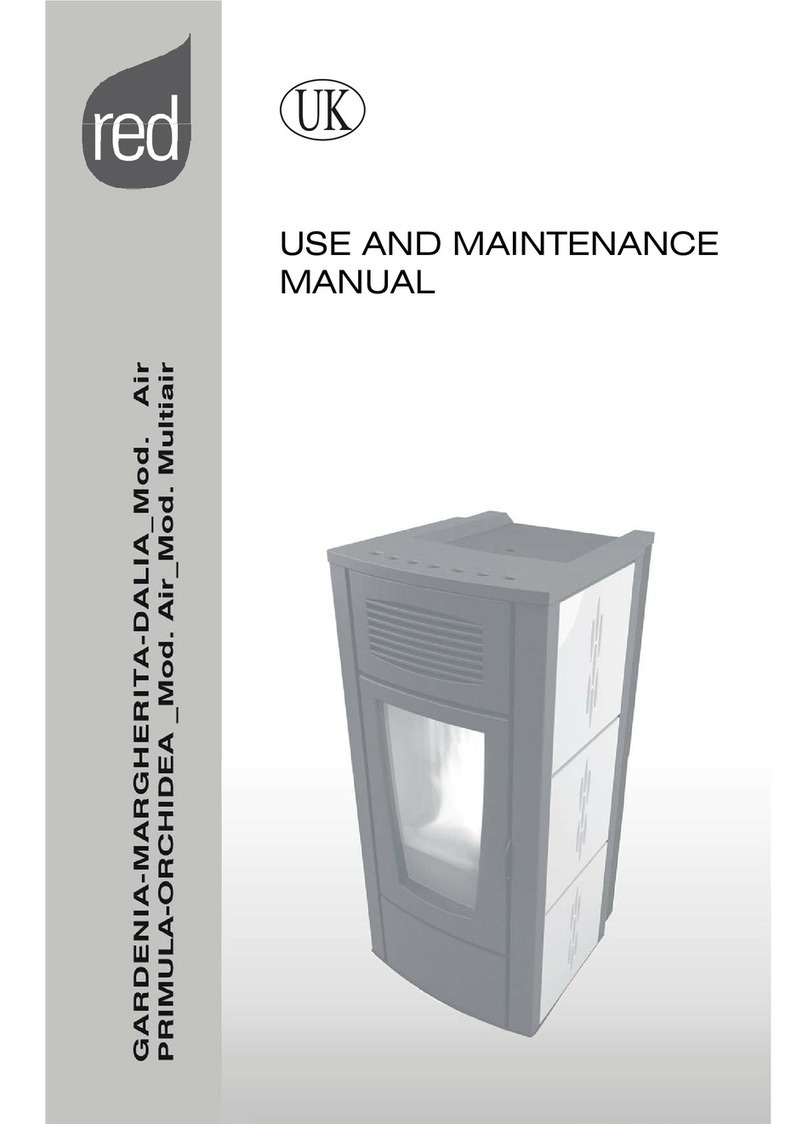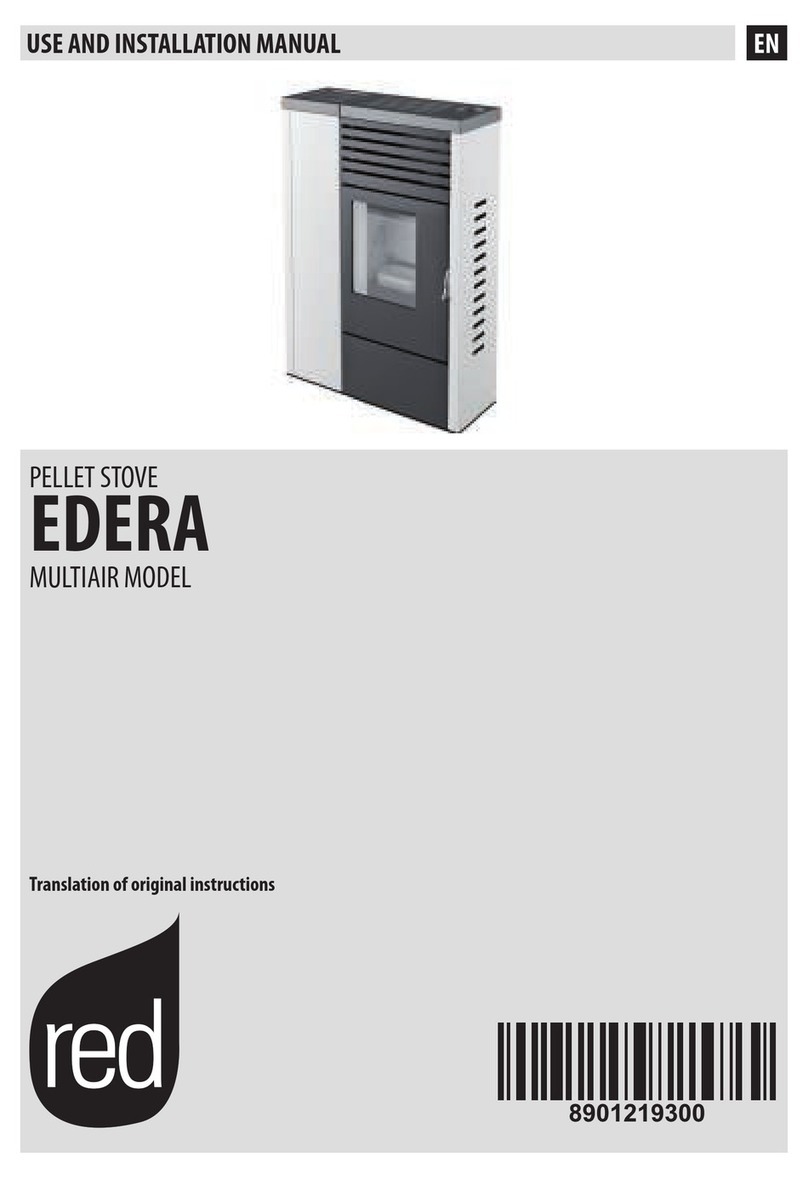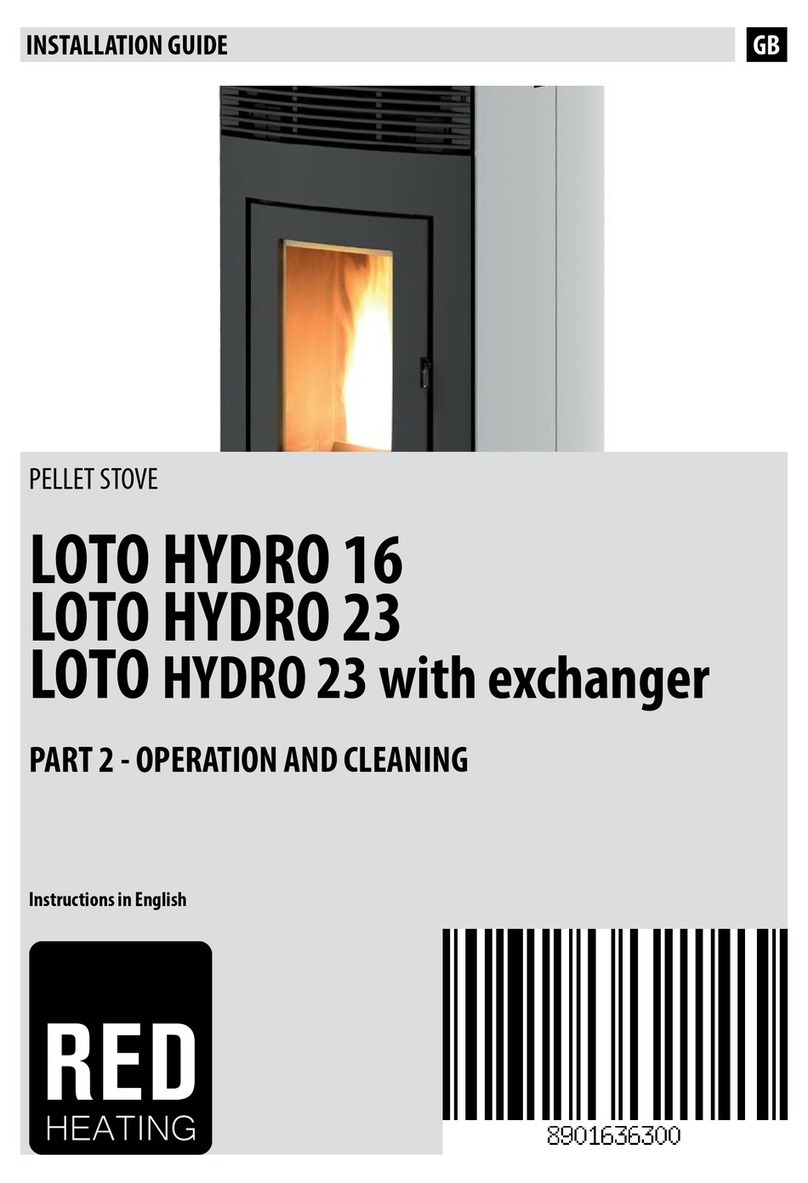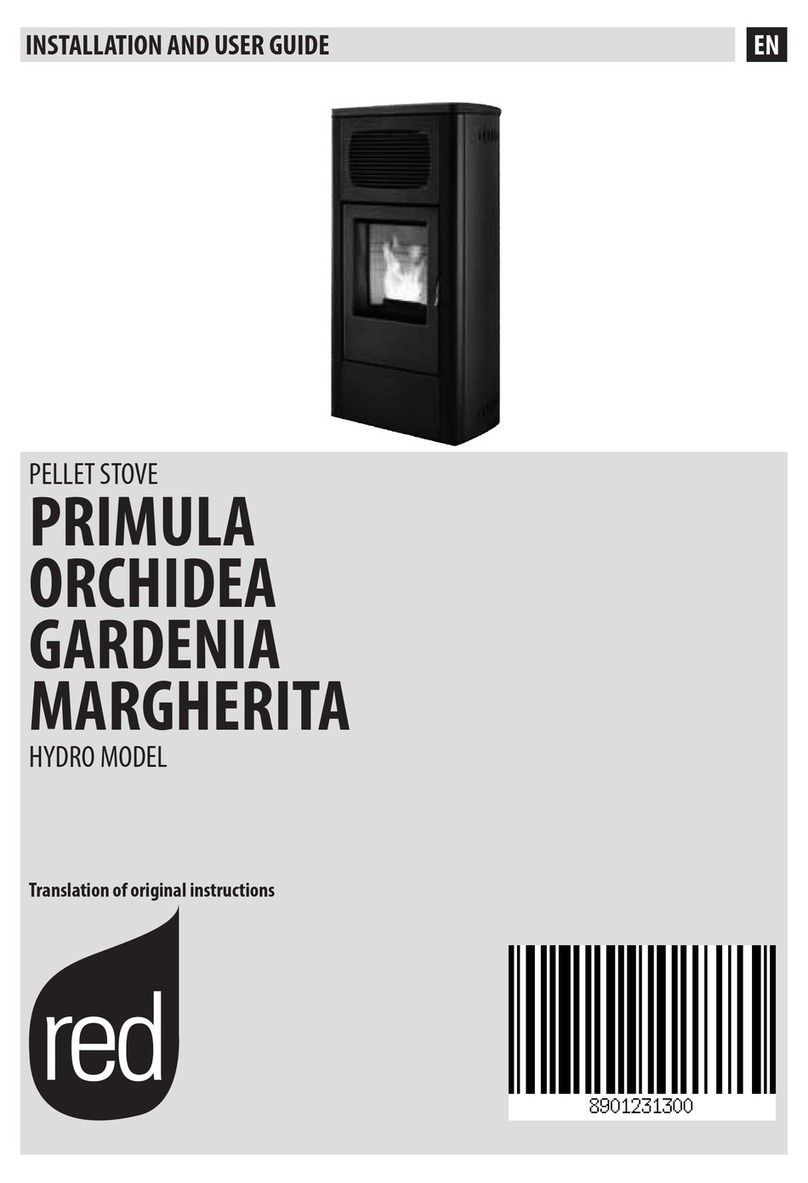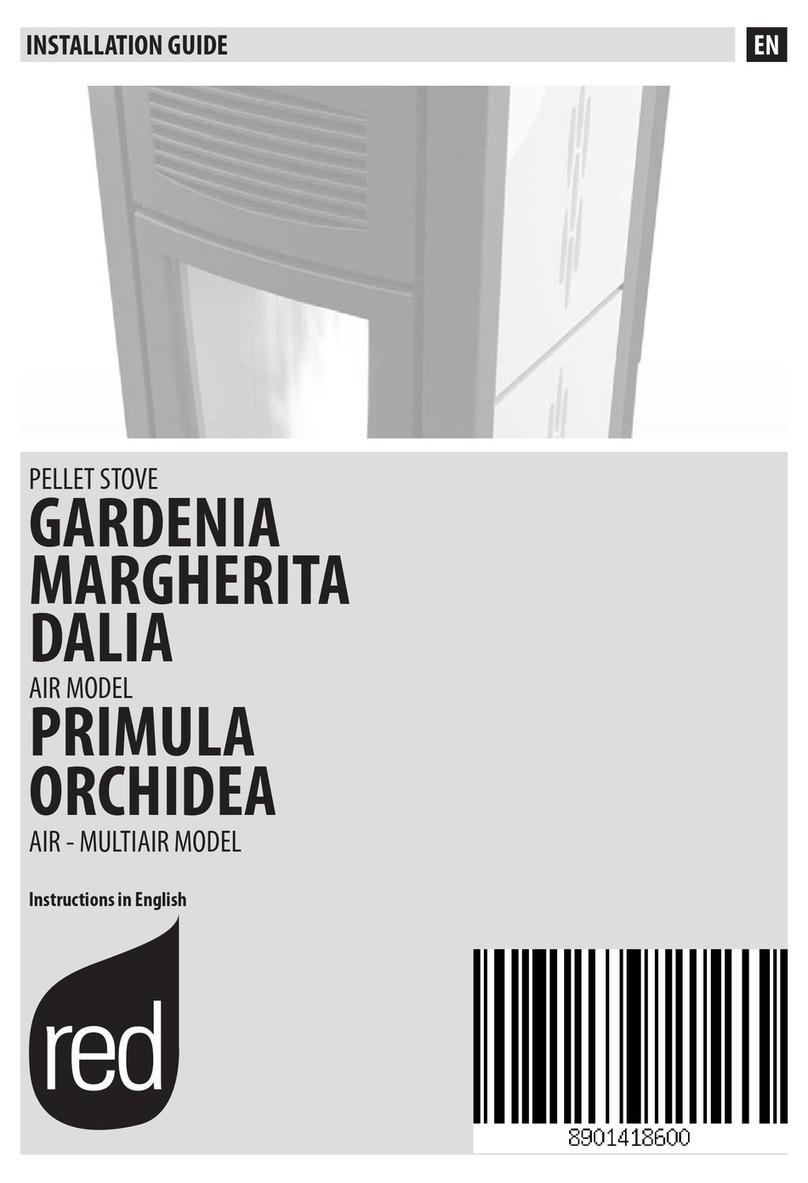red PELLET STOVES Contents
INSTALLATION AND USE MANUAL
page 3
Contents Technical service - Rights reserved - Reproduction prohibited
INTRODUCTION ....................................................................................................................................5
1. WARNINGS AND GUARANTEE CONDITIONS.....................................................................................6
1.1.SAFETY INSTRUCTIONS..................................................................................................................6
1.2.OPERATING WARNINGS..................................................................................................................7
1.3.GUARANTEE CONDITIONS ..............................................................................................................8
1.3.1.Limitations...............................................................................................................................8
1.3.2.Exclusions................................................................................................................................8
2. THEORETICAL NOTIONS FOR INSTALLATION ................................................................................10
2.1.Pellets..........................................................................................................................................10
2.2.PRECAUTIONS FOR INSTALLATION................................................................................................11
2.3.OPERATING AREA.........................................................................................................................12
2.4.CONNECTION TO THE EXTERNAL AIR INTAKE................................................................................12
2.5.CONNECTION OF SMOKE DISCHARGE PIPE....................................................................................13
2.6.CONNECTION TO THE FLUE PIPE...................................................................................................14
2.7.CONNECTION TO AN EXTERNAL FLUE WITH INSULATED OR DOUBLE-WALL PIPE.............................14
2.8.CONNECTION TO THE FLUE PIPE...................................................................................................14
2.9.OPERATING PROBLEMS CAUSED BY DRAUGHT DEFECTS IN THE FLUE.............................................15
2.10.PLUMBING CONNECTION...........................................................................................................16
3. INSTALLATION AND ASSEMBLY......................................................................................................17
3.1.DRAWINGS AND TECHNICAL CHARACTERISTICS............................................................................17
3.1.1.PRIMULA /ORCHIDEA Hydro ...................................................................................................17
3.1.2.Technical characteristics .........................................................................................................18
3.2.PREPARATION AND UNPACK ING...................................................................................................19
3.3.LATERAL CLADDING ASSEMBLY.....................................................................................................21
3.4.PLUMBING SYSTEM CONNECTION .................................................................................................23
3.4.1.Connections to the system......................................................................................................24
3.4.2.System filling .........................................................................................................................25
3.4.3.Water characteristics..............................................................................................................25
3.5.EXAMPLE INSTALLATION DIAGRAMS .............................................................................................26
3.5.1.Heating installation diagram....................................................................................................26
3.5.2.Heating installation diagram in combination with a boiler...........................................................27
3.5.3.Heating installation in combination with a storage tank..............................................................27
4. OPERATION .....................................................................................................................................28
4.1.PRE-LIGHTING WARNINGS............................................................................................................28
4.2.PRE-LIGHTING CHECK ..................................................................................................................29
4.3.LOADING THE PELLETS.................................................................................................................29
4.4.CONTROL PANEL..........................................................................................................................29
4.5.SETTINGS TO CARRY OUT BEFORE FIRST LIGHTING ......................................................................30
4.5.1.SETTING CURRENT TIME........................................................................................................30
4.5.2.Memorization of recipe on stove..............................................................................................30
4.6.CONTROL OF WATER TEMPERATURE IN BOILER ............................................................................31
4.7.FIRST LIGHTING ..........................................................................................................................31
4.7.1.Lighting the stove...................................................................................................................31
4.7.2.Extinguishing the stove...........................................................................................................32
4.8.VIEW OF THE FLAMES ..................................................................................................................32
4.8.1.The shape .............................................................................................................................32
4.8.2.The colour.............................................................................................................................33
4.8.3.The character ........................................................................................................................33
4.9.OPERATION .................................................................................................................................33
4.9.1.Operating concept..................................................................................................................33
4.9.2.Operating modes....................................................................................................................34
4.9.2.1.Internal thermostat - Position of internal room sensor.........................................................35
4.9.2.2.Operation by means of external thermostat .......................................................................35
